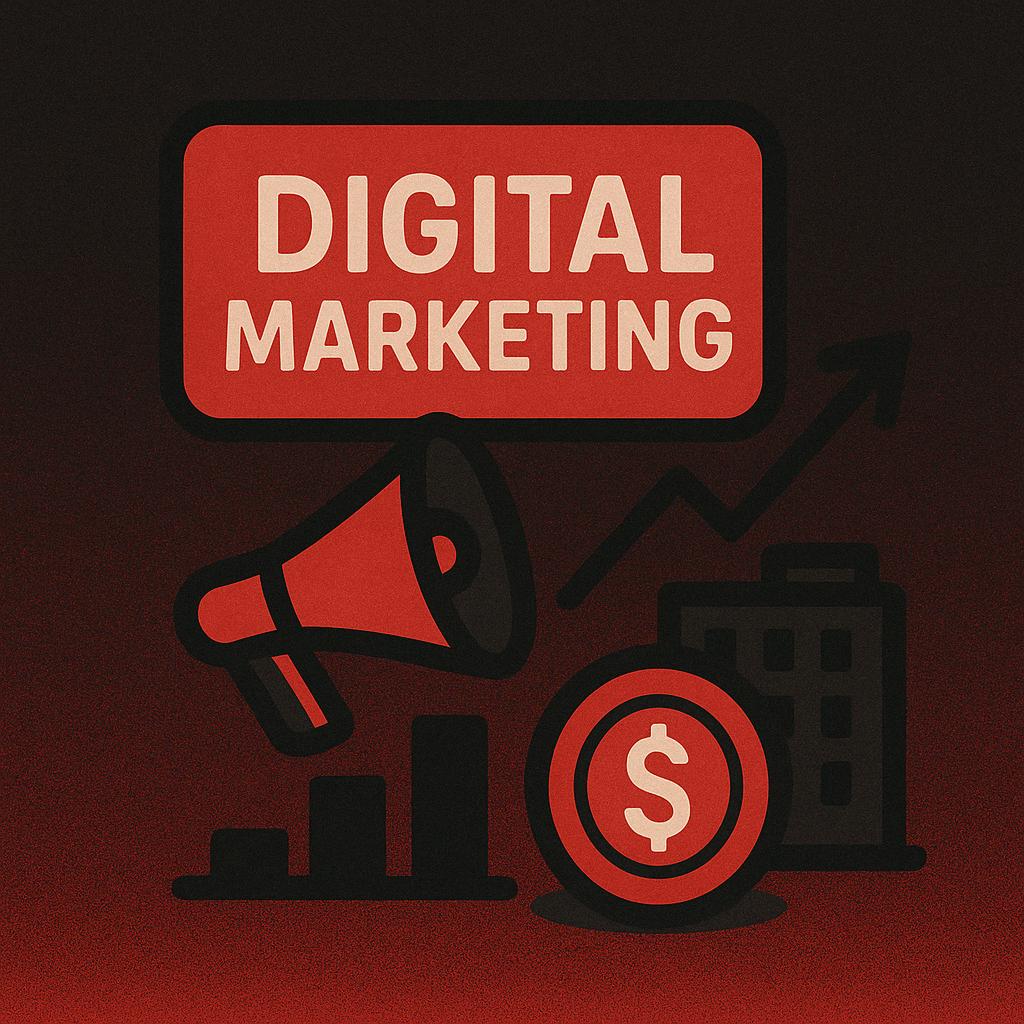In today’s digital age, email marketing is an essential tool for businesses across all industries. For financial services companies, email marketing is a powerful way to connect with clients and prospects, driving customer acquisition, retention, and overall growth. This article will delve into how financial services businesses can harness the power of email marketing to build successful campaigns that resonate with their audience. We will provide actionable insights to help you build effective financial services email campaigns, from gathering leads to crafting personalized content and ensuring legal compliance.
Why Email Marketing Matters in Financial Services
The Role of Email Marketing in Customer Acquisition and Retention
Email marketing serves as a direct line of communication between financial services companies and their customers. This channel plays a crucial role in customer acquisition and retention by enabling businesses to share valuable insights, financial product offerings, and personalized messages. With targeted email campaigns, businesses can build relationships with clients, resulting in long-term loyalty and repeat business.
Email marketing also helps financial services companies stay top of mind. Consistent engagement through well-crafted email campaigns ensures that your business remains in the conversation, making it easier for customers to return when they need additional financial services or products.
Increased Engagement and Conversion Rates in the Financial Sector
When executed correctly, email marketing can lead to high engagement and conversion rates in the financial services industry. Tailored content, such as financial tips, educational resources, or promotions, resonates with your audience and drives action. By using segmentation and personalization, financial email campaigns can achieve a higher level of engagement and better conversion rates than more traditional marketing methods.
Regulatory Considerations for Email Marketing in the Financial Industry
Email marketing in the financial sector must comply with stringent regulations. Financial institutions must adhere to laws such as the General Data Protection Regulation (GDPR) and the CAN-SPAM Act to ensure that email communications are legal and ethical. Additionally, the Financial Conduct Authority (FCA) and other industry regulators may impose restrictions on the types of content that can be sent via email, especially when promoting financial products.
Email Marketing Financial Services: Key Challenges and Opportunities
Overcoming Trust Issues in Financial Email Campaigns
Trust is a significant factor when it comes to email marketing in the financial services industry. Financial products are often complex and involve sensitive information, so customers must trust that businesses are handling their data responsibly. To overcome trust issues, financial services email campaigns must focus on transparency and clear communication. Using familiar and reliable branding, providing disclaimers where necessary, and maintaining a strong focus on privacy are all ways to build credibility.
Leveraging Personalization to Drive Better Results
Personalization in email marketing has the power to significantly boost engagement and conversion rates. By using customer data to tailor content to individual needs and preferences, financial services companies can send targeted messages that resonate more deeply with their audience. Personalized subject lines, dynamic content, and product recommendations based on customer behavior can increase open rates and click-through rates.
Addressing the Diverse Needs of Different Customer Segments
The financial services industry serves a broad range of customers with different needs. From individuals seeking personal loans to businesses looking for investment opportunities, financial email campaigns must be segmented to address these diverse needs. By using demographic, behavioral, and transactional data, financial services companies can create targeted campaigns that speak directly to each customer segment.
Opportunities to Use Email Marketing for Cross-Selling and Upselling Financial Products
One of the key opportunities in financial services email marketing is cross-selling and upselling. Through personalized emails, businesses can recommend relevant products or services to existing customers. For example, if a customer has a checking account, they might be interested in a savings account or credit card. By strategically promoting related products, financial services companies can increase customer lifetime value and drive additional revenue.
Building a Strong Email List for Financial Services
How to Gather High-Quality Leads for Your Email Marketing Financial Services Campaigns
Building a high-quality email list is the foundation of any successful email marketing campaign. Financial services companies can gather leads through various methods, such as offering downloadable financial guides, creating landing pages with lead magnets, or using online webinars to capture contacts. It’s essential to focus on gathering leads who are genuinely interested in your products and services, as these individuals are more likely to engage with your campaigns.
Best Practices for List Segmentation: Demographic, Behavioral, and Transactional Data
Segmenting your email list is critical to delivering the most relevant content to your audience. By categorizing leads based on demographic data (age, income, location), behavioral data (website visits, clicks), and transactional data (purchase history), you can send targeted emails that cater to the specific needs of each segment. Proper segmentation increases the chances of your emails being opened and acted upon, which leads to higher conversion rates.
Ensuring Compliance with GDPR and Other Privacy Laws
The financial services industry must be especially diligent when it comes to data privacy laws. GDPR, CAN-SPAM, and other privacy regulations must be strictly adhered to when collecting email addresses and sending communications. Businesses must ensure that customers explicitly opt-in to receive emails and that they can easily opt-out when they no longer wish to receive messages.
Importance of List Hygiene and Email Deliverability
Maintaining a clean email list is crucial for successful email marketing campaigns. Regularly remove inactive or invalid email addresses to improve email deliverability. A poor deliverability rate can damage your sender reputation and reduce the effectiveness of your campaigns. Regular list hygiene practices, such as removing unsubscribed users or bounced email addresses, will ensure that your emails reach the intended recipients.
Crafting Compelling Email Content for Financial Services
Crafting Subject Lines that Grab Attention While Adhering to Financial Regulations
In the financial services industry, crafting subject lines that grab attention while complying with regulations is crucial. The subject line is the first thing recipients see, and it must be engaging without being misleading. Avoid making exaggerated claims or using words that could be seen as promising guaranteed returns, as this could violate advertising regulations.
Writing Clear, Concise, and Compliant Email Copy for Financial Products
When it comes to email copy for financial services, clarity is key. Use simple language to explain complex financial products and services, ensuring that customers can easily understand the benefits. The content should also be compliant with relevant regulations, meaning that all disclaimers, terms, and conditions should be clearly stated.
Designing Emails that Are Mobile-Friendly and Accessible
With more people accessing email on mobile devices, it’s crucial to design emails that are mobile-friendly. This means using a responsive design that adjusts to different screen sizes and ensuring that buttons and links are easy to click. Additionally, your emails should be accessible to individuals with disabilities, using alt text for images and ensuring compatibility with screen readers.
Creating Trust Through Transparency and Value in Your Email Content
To build trust with your audience, your email content must provide real value. Share useful financial tips, offer educational content, and highlight customer success stories. By demonstrating that your emails provide real value, customers will be more likely to engage with your brand and trust your offerings.
Personalization and Automation in Email Marketing Financial Services
Using Data-Driven Personalization to Enhance Engagement
Data-driven personalization is a key strategy in financial services email marketing. By using data such as browsing history, purchase behavior, and demographics, you can send tailored messages that resonate with recipients. Personalization not only enhances engagement but also makes emails feel more relevant and timely, increasing the chances of conversions.
Setting Up Triggered Emails for Timely and Relevant Communications
Triggered emails, such as welcome emails, account reminders, or post-purchase follow-ups, ensure that your communication is timely and relevant. For instance, if a customer has recently signed up for a loan, a triggered email could provide them with information about how to manage their loan effectively. Automation tools allow you to set up these triggers, ensuring that you send the right message at the right time.
Examples of Successful Automated Campaigns in the Financial Services Industry
Many financial services companies use automated email campaigns to nurture leads and retain customers. For example, automated welcome email sequences can introduce new clients to your services, while follow-up emails can remind customers about upcoming deadlines or new product offerings. These campaigns save time and ensure that your customers are continuously engaged.
Tools and Platforms for Email Marketing Automation
There are numerous tools and platforms available to help financial services companies automate their email campaigns. Popular tools like Mailchimp, Klaviyo, HubSpot, and ActiveCampaign offer features that allow businesses to create personalized, automated email sequences. These platforms also provide analytics to help optimize your campaigns.
A/B Testing and Optimization for Financial Services Campaigns
The Importance of Testing Subject Lines, Content, and CTAs in Email Marketing
A/B testing is an essential technique in email marketing for financial services. By testing different subject lines, content formats, and call-to-actions (CTAs), you can identify which elements resonate best with your audience. A/B testing allows you to optimize your email campaigns, leading to better results over time.
Analyzing Results and Optimizing Campaigns Based on Customer Behavior
Once you’ve tested different variations, it’s important to analyze the results and adjust your campaigns accordingly. Look at metrics like open rates, click-through rates, and conversion rates to see how well your emails are performing. By understanding customer behavior, you can refine your strategies and improve your overall email marketing performance.
Key Performance Indicators (KPIs) to Track for Financial Services Email Campaigns
In the financial services industry, key performance indicators (KPIs) help gauge the effectiveness of your email marketing campaigns. Common KPIs to track include open rates, click-through rates, conversion rates, and unsubscribe rates. Monitoring these metrics helps you make data-driven decisions and optimize your campaigns for better results.
Legal Considerations for Email Marketing Financial Services
Ensuring Compliance with Regulations Like the CAN-SPAM Act, GDPR, and Others
Compliance with regulations such as the CAN-SPAM Act and GDPR is essential for any email marketing campaign in the financial services industry. These laws ensure that businesses respect customers’ privacy, obtain consent before sending marketing emails, and provide an easy way to unsubscribe. Failure to comply with these regulations can result in hefty fines and damage to your brand’s reputation.
The Role of Disclaimers and Clear Consent in Email Marketing for Financial Services
In financial services email marketing, it’s important to include disclaimers and clear consent notices. When promoting financial products or services, be transparent about terms and conditions. Clear consent ensures that customers are fully aware of what they are signing up for and that they have given their explicit permission to receive marketing emails.
How to Handle Sensitive Customer Data in Your Campaigns Securely
Handling sensitive customer data securely is critical in financial services email marketing. Ensure that all customer information is encrypted and stored in compliance with data privacy laws. Avoid collecting excessive personal information and always get explicit consent before using data for marketing purposes.
Email Marketing Financial Services: Best Practices for Effective Campaigns
Frequency and Timing: How Often Should You Send Emails?
Striking the right balance between email frequency and relevance is key to maintaining customer engagement. Too many emails can overwhelm your subscribers, while too few may result in your company being forgotten. Test different sending frequencies to determine the optimal timing for your audience.
Crafting a Balanced Email Marketing Strategy That Builds Trust Without Overwhelming Subscribers
Your email marketing strategy should focus on building long-term relationships with your audience. Offer valuable content without overwhelming your subscribers with too many promotional emails. A balanced approach will help nurture trust and loyalty over time.
Providing Valuable Financial Insights to Your Subscribers to Keep Them Engaged
Keep your subscribers engaged by offering useful financial insights, tips, and educational content. By demonstrating your expertise and providing real value, you will increase your subscribers’ trust and keep them engaged with your emails.
How to Use Email Marketing to Nurture Relationships with Current and Prospective Clients
Email marketing is an excellent tool for nurturing relationships with both current and prospective clients. Regular communication through emails helps build rapport, trust, and loyalty, which is crucial for retaining customers and converting prospects into clients.
Measuring Success: Analytics and Reporting in Financial Services Email Campaigns
Setting Up Email Marketing Goals and Measuring ROI
To assess the success of your email campaigns, it’s essential to set clear goals and track your return on investment (ROI). Whether you aim to increase conversions, drive traffic to your website, or promote specific products, setting goals helps measure the effectiveness of your campaigns.
Common Metrics to Track: Open Rates, Click-Through Rates, Conversion Rates
Some of the most important metrics to track in email marketing include open rates, click-through rates (CTR), and conversion rates. Monitoring these metrics allows you to gauge the effectiveness of your campaigns and adjust them to improve results.
Using Data to Continuously Refine and Improve Email Marketing Strategies
The data collected from your email campaigns can help you continuously improve your strategies. Analyze customer behavior and preferences to fine-tune your approach, ensuring that your emails remain relevant and engaging.
Tools for Tracking and Analyzing Email Campaign Performance
There are several tools available to track and analyze the performance of your email campaigns. Platforms like Google Analytics, HubSpot, and Mailchimp offer in-depth analytics to help you optimize your email marketing efforts.
Case Studies: Successful Email Marketing Campaigns in Financial Services
Real-World Examples of Effective Email Marketing Financial Services Campaigns
To understand how to effectively use email marketing in the financial services industry, look at case studies of successful campaigns. For example, a well-known bank might have used targeted email outreach to promote a new credit card offering, resulting in a high conversion rate and increased customer acquisition.
Key Takeaways and Lessons from These Campaigns
Key takeaways from successful campaigns include the importance of segmentation, personalization, and data-driven insights. By analyzing these case studies, you can identify strategies that are proven to work in the financial services industry.
Analyzing the Strategies and Tools Used by Top Financial Service Companies
Top financial services companies use advanced email marketing tools and platforms to automate campaigns, analyze performance, and personalize communications. By understanding their strategies, you can adopt best practices to enhance your own campaigns.
Conclusion
Email marketing is an essential component of any financial services business’s marketing strategy. By focusing on segmentation, personalization, and compliance, you can create effective email campaigns that drive engagement and conversions. Use the insights and strategies outlined in this article to start building your own successful email marketing campaigns today!

 Amazon Marketing
Amazon Marketing


